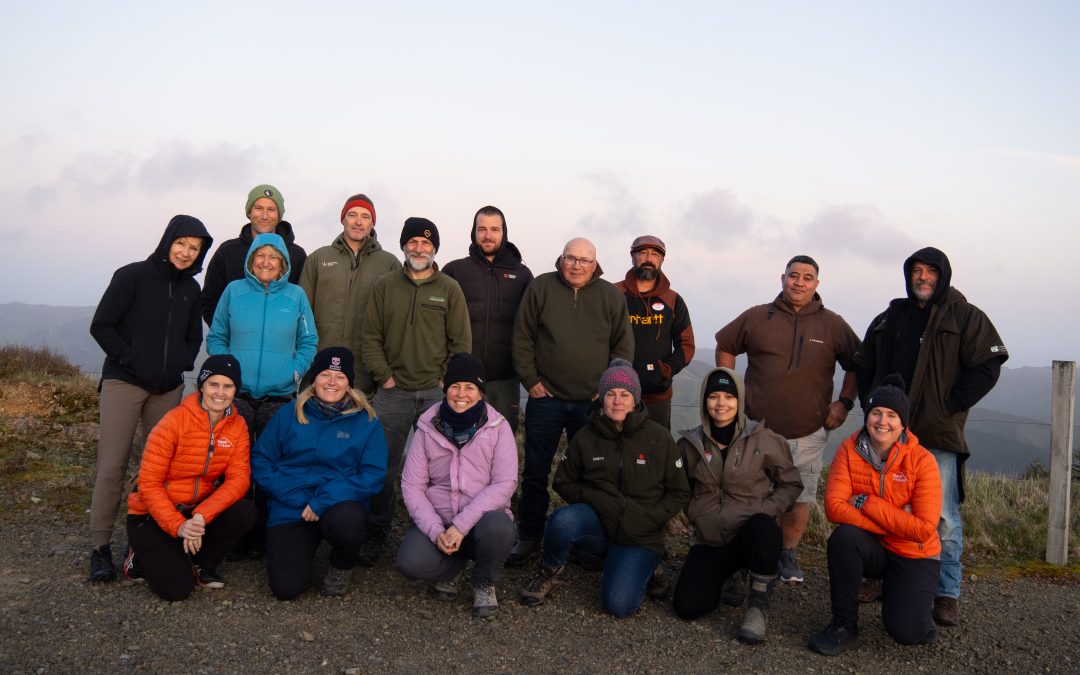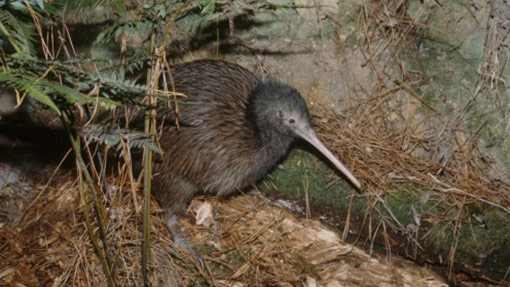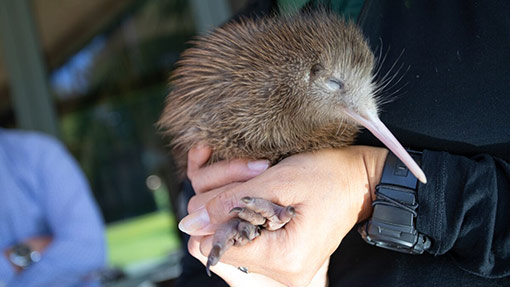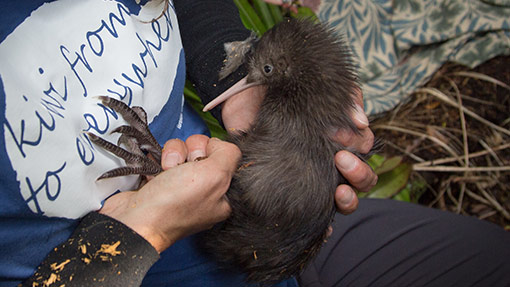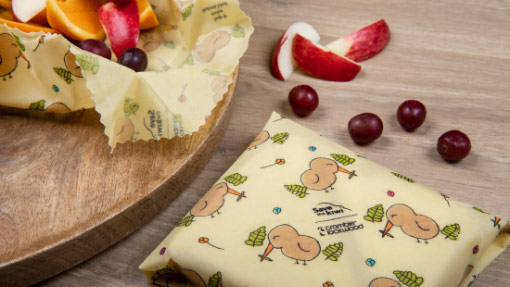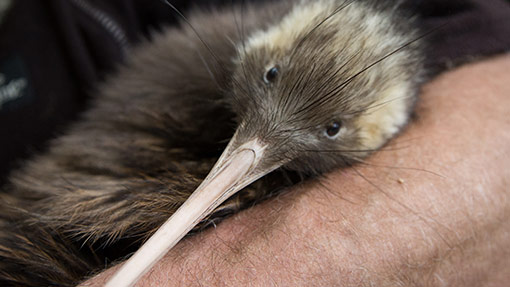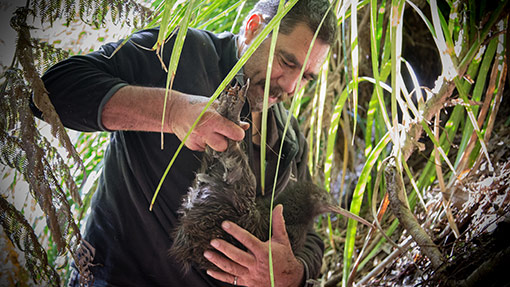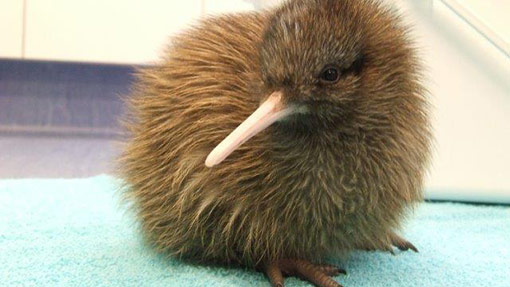Out in the breezy hills west of Wellington city, Kiwi Avoidance Training (KAT) trainees sit in a circle on plastic chairs in the Mākara Model School. Today is the first day of the KAT wānanga, where people interested in becoming a trainer will learn the basics of training dogs to avoid kiwi.
Kiwi are making a comeback throughout Aotearoa New Zealand. Their populations are overlapping more with where people live and where their dogs are likely to encounter them. Kiwi don’t have breastbones or strong chest muscles to protect their internal organs and this means even a gentle nudge from an inquisitive dog has the potential to crush the delicate ribcage and internal organs (even if they were not intentionally aggressive).
It is natural behaviour for a dog to investigate interesting odours and movement. Kiwi have a strong musty smell and can move in a rather curious way, a perfect object of interest for a dog regardless of their size, breed, training, or temperament.
Finding kiwi in the wild hills of Wellington
On the first evening at the Mākara Model School, everyone got to meet their co-trainees, and some existing trainers who attended to refresh their own skills while supporting the new trainees. There were people who came from the East Coast, Taranaki, Wellington, and even all the way from Northland. They were here to learn from the experienced KAT trainers who have years of training dogs under their belts.
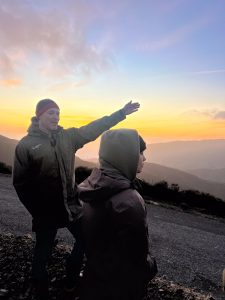



Paul Ward, founder and project lead (left), and Jeff Hall, Field Services Specialist (right), brought everyone to the Mākara hills to listen for kiwi
As the sun set, Paul Ward and Jeff Hall of Capital Kiwi brought everyone on a quick field trip to the kiwi release site in the Makara hills. Around 200 kiwi were released here since 2022. Just this year, they celebrated 10 out of 10 wild-hatched kiwi chicks reaching the fighting weight of 1 kilogram, a sign that the 4,600 traps that line the hills has been effective at keeping stoats at bay.
We stood in the strong breeze (classic Wellington weather) straining our ears to listen for them. After several minutes, there was the distinct call of a male in the gorse bushes in front of us. We could barely see through our red torches and headlamps, but everyone had big smiles. Even if many in the crew have seen kiwi and have even previously handled kiwi, it’s always a great experience to hear their calls out in the wild.
Teaching trainees new tricks
Over the next two days, the Kiwi Avoidance Training team (coordinated by Save the Kiwi and Department of Conservation) held a mix of lectures and practical training aimed at helping trainees learn the ropes of kiwi avoidance training. This included how to ensure their and the dog’s safety, setting up the arrival area for dog owners, and all the fine details that go into creating a scent-driven course for the dogs.
A number of the sessions were led by Guus Knopers, a longtime KAT trainer. While he currently trains dogs for various purposes through a number of agencies, he holds monthly KAT sessions in the Bay of Plenty and Whakatane region. Over the sessions, Guus shared insights from his decades of experience working with dogs and their owners.
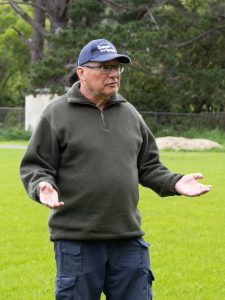
Guus sharing pointers for designing scent-based courses that are the backbone of KAT sessions.
A well-designed course can define how well a training session goes. Trainers will need to account for the direction of the wind and even ensure that the… droppings of enthusiastic dogs are cleaned out.
Walking along the course doesn’t involve interacting with live kiwi though. Trainers use kiwi models, from taxidermised specimens to small statues, which are nestled into kiwi bedding donated by captive facilities or kiwi monitoring projects so that these have the distinct kiwi scent.


KAT training uses taxidermy kiwi and models for dogs with bedding that have kiwi scent for dogs to interact with.
In the afternoons, the trainees also had the chance to assist with KAT sessions hosted by Capital Kiwi, who have been holding these sessions for the local community as part of welcoming kiwi back into the region. From working dogs to pooches that have kiwi approaching their backyards, we saw a diverse bunch of canines whose owners were keen on keeping their dogs’ paws (and mouths) off kiwi.
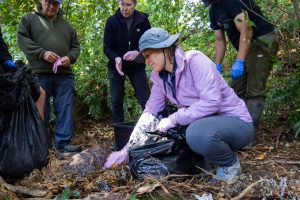
KAT trainees ran their own sessions on the afternoon of the second day. This included setting up their own course.
At first, trainees shadowed the experienced trainers and observed the sessions. Then, they were given the chance to design their own course and run sessions under the guidance of trainers.
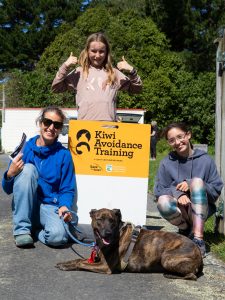
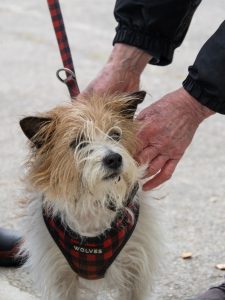
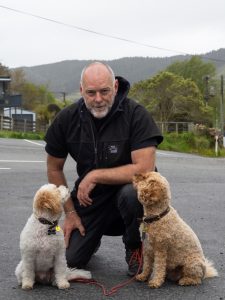
All kinds of dogs came to the KAT sessions
Overall, the wānanga was taken paw-sitively. At the end of the last day, trainees mentioned gaining more confidence to run sessions. They also mentioned appreciating the space to be able to meet other trainers who they can keep in touch with after the wānanga.
Dogs and kiwi can thrive together
Hatching, raising, and translocating kiwi are important steps in kiwi recovery but once kiwi are in place, thriving without pests, and expanding into areas where people live, we need to be able to protect them from their next biggest threat: dogs. We say any dog can kill a kiwi, but it’s entirely possible for dogs and kiwi to live in the same area.
Training the next cohort of KAT trainers is a key step to ensuring kiwi thrive around the country. Trainers are active members of the kiwi conservation community, giving dog owners another tool in their kit to protect kiwi as they go from endangered to everywhere.
Do you and dogs live close to areas with kiwi? For hunting dogs, it’s important to:
- Keep pack sizes small;
- Hunt during the day;
- Ensure that every dog comes home at the end of the day; and
- Complete regular Kiwi Avoidance Training with an endorsed trainer
If you have a pet dog, we recommend you ensure to:
- Keep dogs under control;
- Keep dogs contained at night (in a secure kiwi-proof run, or inside); and
- Walk dogs on a lead anywhere that kiwi could be
Read more about Kiwi Avoidance Training here.

